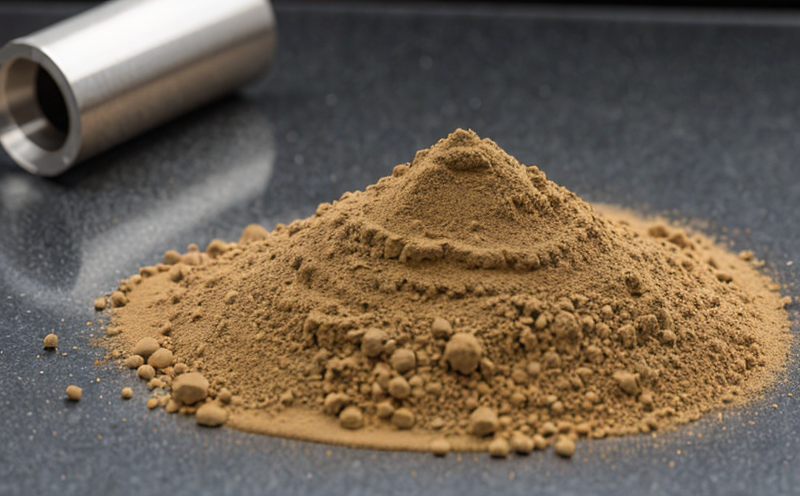ASTM C1069 Specific Surface Area of Ceramics Testing
The specific surface area (SSA) test in accordance with ASTM C1069 is a critical method for quality assurance and research in the additive manufacturing, ceramics, and materials science sectors. The SSA test measures the total internal surface area available within the pores or cracks of ceramic powders or particles. This information is essential for optimizing the performance of 3D-printed components, ensuring uniformity across batches, and improving the overall mechanical properties of ceramics.
The ASTM C1069 method utilizes nitrogen adsorption at low temperatures to determine the SSA. The test provides insights into particle morphology and porosity distribution, which are crucial for additive manufacturing processes where surface area directly impacts the bonding strength between particles during sintering or 3D printing. This information is vital for ensuring that materials meet specific performance criteria required by industry standards.
In the context of ceramics, SSA testing helps identify potential issues such as agglomeration, which can lead to non-uniform distribution within a printed part. Understanding the SSA allows for precise control over the additive manufacturing process, leading to higher quality end products with consistent properties.
The ASTM C1069 method is widely used in research and development (R&D) environments as well as in production settings where compliance with international standards like ISO 9276-1:1984 and ASTM E3 has become a necessity. By accurately measuring the SSA, manufacturers can ensure that their materials meet stringent quality requirements set by these standards.
For procurement teams looking to source high-quality raw materials for additive manufacturing projects, this test provides essential data on particle characteristics. This ensures that suppliers are delivering consistent products that will perform reliably in end-use applications. Furthermore, the results from ASTM C1069 testing can be used as a key performance indicator (KPI) during supplier audits and quality control checks.
Scope and Methodology
| Parameter | Description |
|---|---|
| Sample Preparation | The sample should be dry and free from contaminants. It is recommended to use a representative sample that reflects the properties of the entire batch. |
| Adsorption Equipment | A Micromeritics ASAP 2010 or equivalent equipment equipped with a low-temperature (77 K) adsorption system is used. |
| Sampling | The sample is loaded into the adsorption vessel and degassed under vacuum to remove volatile impurities. Degassing is performed at 100°C for 4 hours. |
| Data Collection | Adsorption data are collected over a range of nitrogen pressures from 10-7 to 1 atm. The pressure–volume isotherm is analyzed using the BET (Brunauer–Emmett–Teller) method. |
Industry Applications
- In additive manufacturing, SSA testing helps in optimizing print parameters such as powder flow and layer thickness to ensure consistent part quality.
- For ceramic manufacturers, this test ensures that the raw materials used meet the required specifications for both product quality and compliance with industry standards.
- In research settings, ASTM C1069 testing aids in understanding how particle size and morphology affect the mechanical properties of ceramics.
- The results from this test are also valuable in quality control processes to monitor the consistency of raw material batches throughout production cycles.
Why Choose This Test
The ASTM C1069 SSA test offers several advantages over other methods for characterizing ceramic materials. Its precision and repeatability make it an ideal choice for both laboratory research and industrial applications. The ability to measure the internal surface area of ceramics provides critical information about their porosity, which is essential for optimizing additive manufacturing processes.
Additionally, compliance with international standards like ASTM C1069 ensures that materials meet stringent quality requirements set by regulatory bodies worldwide. This test also supports continuous improvement efforts within organizations by providing clear metrics against which performance can be measured and compared over time.
For companies involved in additive manufacturing or ceramic production, investing in an ASTM C1069 SSA test can lead to significant improvements in product quality and process efficiency. By ensuring that raw materials meet the specified criteria, manufacturers can reduce waste, improve yield rates, and enhance overall competitiveness within their respective markets.





